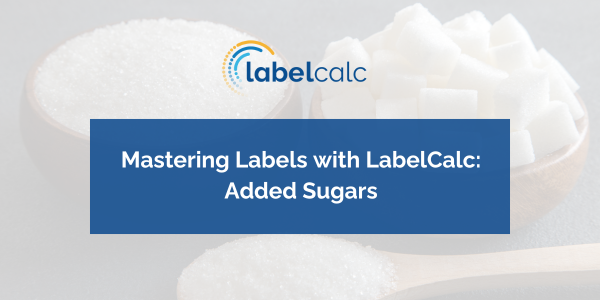There’s an old saying that we are what we eat. The problem is more and more people are eating less and less well. Poor diets contribute to heart disease, strokes, diabetes, and other potentially serious health conditions.
Among the many culprits is added sugar – sugars that are not naturally inherent in a food product.
Fruits and vegetables contain glucose or fructose and have a certain sweetness. However, over time, consumers have developed a taste for enhanced flavor and sweetness, so it’s become commonplace for man-made added sugars (such as corn syrup or refined table sugar) and natural sugars (like maple syrup and honey) to be included in recipes.
When the U.S. Food and Drug Administration (FDA) overhauled the nutritional labeling regulations almost a decade ago, it reassessed what information should be mentioned on packaging and suggested changes. Among them was the decision to create a new mandatory nutrient, “added sugar”, to help consumers limit their intake below 50g/day.
Since 2016, it’s therefore been necessary to include added sugar as part of this comprehensive list of nutrients, vitamins, and ingredients. From January 1, 2020, added sugar has been one of the 15 mandatory nutrients that must always be displayed prominently on food labeling.
Consumers can now see exactly how much sugar is inherent – or natural – in a recipe and how much additional sweetener has been included during processing. Guidelines suggest calories from added sugars should be less than 10% of our daily calorie intake.
Common Mistakes
Adhering to these requirements can be tricky. While the FDA authors the nutritional labeling regulations, the U.S. Department of Agriculture (USDA) is responsible for maintaining the nutrition database that almost all labeling software uses.
Confusingly, the USDA database does not reliably display added sugars, especially for entries before 2016. As the USDA’s database is still not fully aligned with the FDA’s requirements, a high proportion of legacy external ingredients are therefore still not displaying a nutrient field for added sugar.
Although these entries do indeed include additional sweeteners, food processors may find the records for many different food items aren’t entirely accurate.
To make the process a little easier, LabelCalc regularly trawls the USDA database to track down ingredients that are 100% added sugar in a recipe – such as brown sugar, white sugar, corn sugar, molasses, and honey – and flags these to make users aware that any time they include them in a recipe, they should be coded as added sugar.
But with so many manufactured products out there, it always pays to double check for added sugar and take extra care that your recipes are accurate.
Another all-too-common mistake is thinking a single ingredient inherent sugar item (such as maple syrup or honey) should still be listed as zero added sugar if it’s added to another recipe. When these natural sugar products are included in another product, 100% of their sugar counts towards the added sugar and must be included on the labeling (i.e. added sugar = total sugar, even if the label or nutrition statements show zero added sugar).
Doing the Hard Work for You
LabelCalc software makes it easy to create, format, and display all this information properly on a Nutrition Facts Panel. Our software also includes a dedicated field for added sugar for all ingredients created prior to 2020, so you can make adjustments where necessary.
To date, it’s been possible to pull the USDA ingredients into your recipes in LabelCalc but not edit them – and that’s a real problem when so many of these ingredients are missing the added sugar value.
The solution has been recreating the ingredient from scratch in LabelCalc to be able to include added sugar. But that duplication of effort wastes a lot of time.
To save you this hassle, LabelCalc will soon be adding a useful new “Save As” feature that allows you to select ingredients from the USDA database and import them directly into the software, pre-populating all the data rather than you having to create an entirely new entry yourself.
If you’d like to learn more about how food manufacturers use LabelCalc to create accurate and FDA-compliant Nutrition Facts Panels, reach out to our labeling experts today by visiting https://labelcalc.com/contact-us/.

